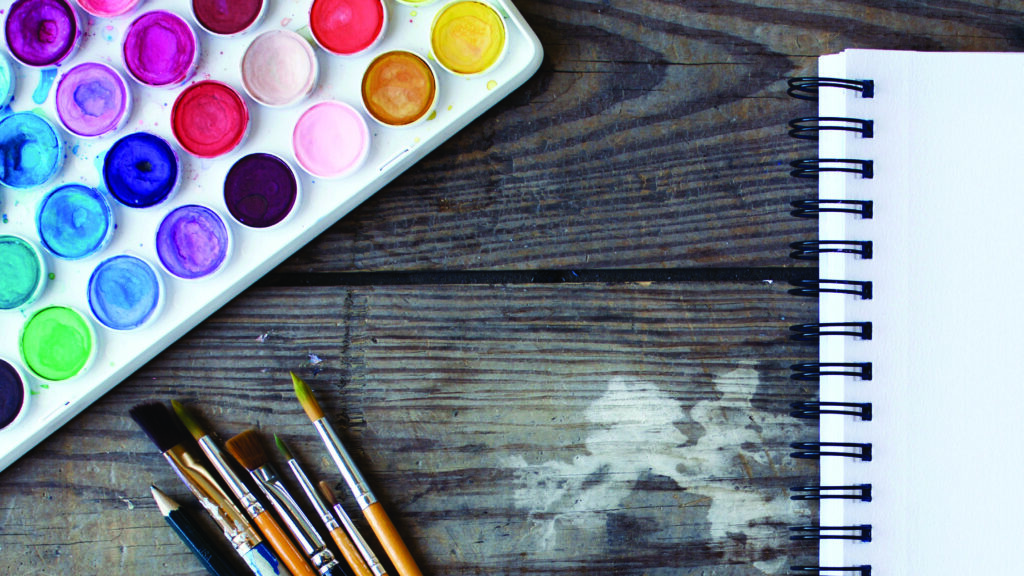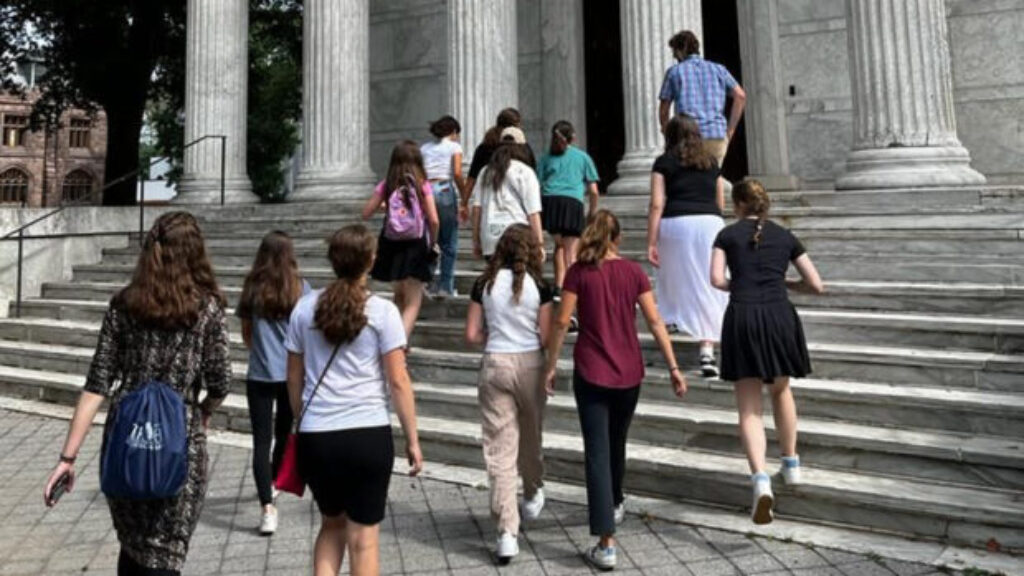Silent Strength: Art as a Vehicle for Healing and Defiance after October 7
BY RACHEL TRATT
The events of October 7 brought about a tragedy of an unimaginable scope, one that is ongoing to this day. Typically, new mediums emerge for dealing with the trauma accompanying this sort of tragedy. In the case of October 7 and the ongoing war in Israel, many are turning to art as a way to express themselves and convey a message to a wide audience. This art is not only beneficial to the artist, allowing the victims of Hamas’s October 7 attack to healthily process their trauma, it is also beneficial to the viewer and contributes to societal healing.
Encountering any tragedy overwhelms the human brain. The Broca’s area, which produces speech, and the Wernicke’s area, which deals with language comprehension, become particularly overwhelmed. Such trauma can overload the brain, impairing speech and comprehension as the areas responsible for language processing become disrupted. When one tries to express their traumatic experiences, the emotional complexities induced by the event are suppressed by the barriers of human language. Thus, verbally conveying one’s tragic story is not always the most effective method of relaying trauma.
Conversely, when the brain processes art, it directly engages the limbic system, the part of the brain that deals with emotion. Thus, art as a response to trauma avoids neurological overload and allows people to convey their unbridled emotions. Creating or experiencing art releases pleasure hormones like dopamine and oxytocin, providing one with emotional relief. Additionally, making art reduces cortisol, the stress hormone, promoting healing and understanding. This continues to be applicable to the survivors of Hamas’s October 7 attack. While often overlooked, art is crucial for helping people endure the emotional upheaval this year has brought.
Some are recognizing the benefits of art to the process of healing. Upon entering the Tel Aviv Museum of Art, one is met by the War Decorations exhibit, a temporary exhibit of paintings by Tal Mazliach, a resident of Kibbutz Kfar Aza who was surrounded by terrorists at her own home for over twenty hours on October 7. Her paintings successfully convey a message that doesn’t require words—viewers can feel her pain just by looking at her art. The sense of restlessness she deliberately creates in her work is evident. She utilizes the repetition of embedded words like “rescued” and phrases such as “They are surrounding me from all sides.”
These embedded words and phrases work side by side with imagery such as self-portraits, weapons, and hands. The frantic emotions that Tal’s pieces evoke highlight the significance of art in processing trauma. It is impossible to fully express the feeling of being trapped and surrounded by terrorists for hours upon hours. Human brains were not designed to convey or process this type of trauma. Extreme and large-scale violence can overwhelm the brain’s ability to integrate and make sense of such overwhelming experiences, frequently resulting in emotional numbing or dissociation. After experiencing this inhumane form of torture, the most a person can do is attempt to express how they feel.
While a viewer or listener will seldom be able to fully understand an artist’s pain, they can gain a much better understanding when their limbic system is engaged, thereby skirting the confines of speech. Just as it is impossible to describe these events, it is impossible to describe the feeling Tal stimulates with her pieces. Her art expresses the inexpressible, allowing the audience to better understand what she has endured.
Not only does art play a crucial role in how people process and understand trauma, it also rejects the notion of victimhood, allowing individuals to maintain control and share their stories. Art is not only a response to trauma; it also serves as a form of defiance. When an artist creates art as a response to trauma, the artist reclaims their autonomy, refusing to be silent. Like Tal Mazliach, artists can assert agency through sharing their stories with the world.
After October 7, it has become especially important to utilize every available method to combat the false narratives that are becoming more widespread and normalized worldwide. The overwhelming violence of October 7 aimed to rob individuals of their autonomy. But utilizing art allows these individuals to define their experience on their own terms. In Israel, artists who respond to the trauma of October 7 are not only processing personal grief but are also contributing to a broader communal dialogue, one that is extremely relevant and ongoing.
Tal Mazliach is just one of many talented artists who have chosen to make art depicting and processing the horrors of October 7. Films, paintings, photography collections, songs, sculptures, and exhibitions have also been created in response. While art is often neglected and deemed superficial, in the case of Israel and the tragedy of October 7, its importance is evident. The creation of art allows the artist to process their emotions and experiences, helps the viewer gain a deeper understanding of their pain, and contributes to society as a rejection of victimhood. In the face of unspeakable tragedy, it is key to examine and promote the art that comes as a result of it.
Suggested Reading

An American Jewish Folk Hero
A striking fact about modern Zionism is that its founder, Theodor Herzl, dedicated his life to Jewish statehood despite originally caring little for Jewishness. At one point, he even advocated…

The “Neighborhood Bully” Returns
BY EMUNA NAIDITCH What happens in the Jewish state affects each and every Jew. As poet Yehuda Halevi famously said, “My heart is in the east, but I am at…

The Importance of the Arts
BY RAFI UNGER What distinguishes humans from animals is our capacity for creativity and generating new ideas. In essence, the unique creativity of humans separates us from other creatures. Unfortunately,…

The Importance of Extracurriculars
Extra curriculars have long been proven to not only aid students in having safe and healthy hobbies, but also in making sure children are ready to become independent adults. The importance of pursuing potential and growing into your own person is both a Jewish value and vital for the future of the Jewish people.